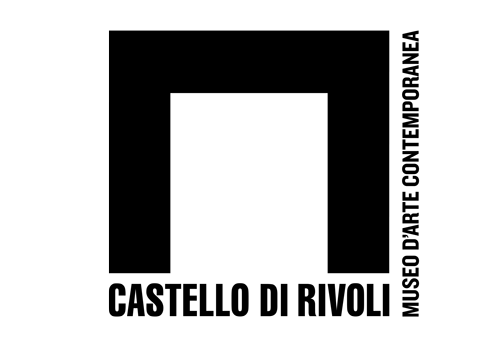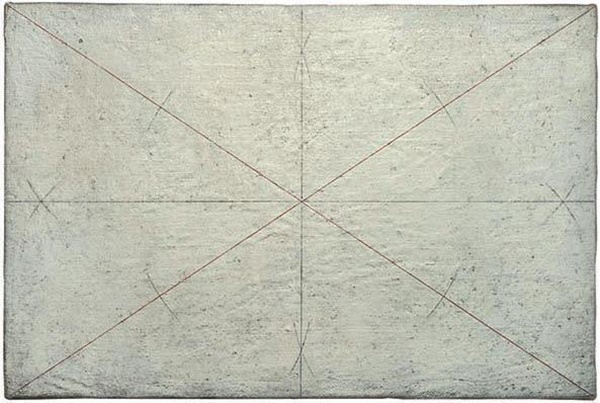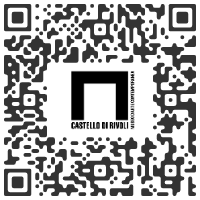"Le chef-d’oeuvre inconnu"
Giulio Paolini

Castello di Rivoli Museum of Contemporary Art
Piazza Mafalda di Savoia 10098 Rivoli - TorinoPhone: +39 011 9565222 e-mail:
15 October, 2020 > 31 January, 2021

The Castello di Rivoli Museo d’Arte Contemporanea presents Giulio Paolini “Le Chef-d’oeuvre inconnu” – an original journey covering sixty years of artistic work through a three-part exhibition comprising a large number of new artworks. Developed in close contact with the artist Giulio Paolini (Genoa, 1940), the exhibition is curated by Castello di Rivoli Chief curator Marcella Beccaria and celebrates the artist’s eightieth birthday. One of the pioneers of the Italian art movement Arte Povera, with whom he shares the use of everyday materials and an interest in the phenomenological relationship between visitors, artworks, and the site of the exhibition space, Paolini foreshadowed the developments of conceptual art through his first artwork Disegno geometrico (Geometric Drawing, 1960), which is the starting point of this new exhibition. Paolini’s works are mirrors and lenses through which art reflects on itself. “Ever since his debut,” writes Marcella Beccaria, “the artist has focused on the ideal and material foundations of art, on the space of the studio and on the occasion of the exhibition as settings in which art is produced and displayed. His work often includes quotations and fragments drawn from the great catalog of the history of art, as well as reformulations of his own works in new contexts. For the artist, the act of seeing constitutes a crucial moment of knowledge-formation, whose truth is nevertheless always relative and subject to constant re-evaluation. Works can provide ideas for subsequent works and new displays in an endless cycle.”
The title of the exhibition, “Le Chef-d’oeuvre inconnu” (The Unknown Masterpiece), refers to a short story written by Honoré de Balzac, first published in 1831. According to Paolini’s method, the tribute to the short story reflects some of the crucial questions which his works raise. Through each of the artworks featured, the exhibition points to the elusive relationship between reality and representation, between an artwork and its image, between vision and artistic intentions, based on an investigation of the very essence of art. “Le Chef-d’oeuvre inconnu” is also the title of the major new installation that greets visitors in the first room of the exhibition (Room 18). The historic work by Paolini, Disegno geometrico (Geometric Drawing), 1960, is expanded three-dimensionally to comprise the entire gallery, transforming the small 1960 artwork into a new participatory place the audience can enter and linger in. The floor, the walls, andthe space abovehouse the elements thatmakeupthe compositional schemeofDisegno geometrico, from the rectangular structure to the red diagonals and the points originally marked with a compass to square the canvas andnow markedby physical easels.In addition toDisegno geometrico itself,the four walls of the room feature as many variations on this work, offering different possible ways of squaring a rectangular surface. The exhibition continues in the next gallery (Room 33), which the artist has called “Vertigo”, to highlight the presence of works moving in space through time, like the protagonists of an unreleased film. Vertigo, 2020, the work which gives its name to the whole gallery, consists of an assemblage comprising a photographic image of the sky printed on a piece of fabric, a pallet and a photograph of a pallet, a number of frames and stretched canvases, empty stretchers, and two photographs with details of the work itself. The various elements seem to be dynamically flowing out of the old fireplace into the room, like entities whose existence predates the author’s intervention. In addition to the installation Vertigo, 2020, the gallery hosts the new work Omega (1948-2018), 2020, a rare occasion in which the artist includes details related to his own biographical history – his Omega watch worn from when he was 8 years old until 2018 when it stopped working. “Fine” senza fine (“The End” Without an End) is the theme which brings together the artworks exhibited in the third and last gallery of the exhibition (Room 32). Here Paolini explores the concept of continuous becoming and the unfathomable secret of artworks, which, even when they consist of apparently legible images, never betray their origin and cannot know their own fate.
As Giulio Paolini states “Day after day, everything is renewed and repeats itself as the natural effect of the incessant becoming of things. In the Museum, by contrast, we can escape from the disquieting destiny marked by the passing of Time. This place seems to be caught in an eternity of its own: here hours, works, and people belong to an instant that lives and renews itself through the same enduring illusion: to hold the end of Time in a specific image. ‘Everything flows,’ as we know, yet nothing prevents us from turning our gaze elsewhere—without a place or date.”
On the occasion of the exhibition, the Castello di Rivoli Museo d’Arte Contemporanea is publishing a catalog in two volumes. One volume is dedicated to the poems written by Giulio Paolini, introduced by Andrea Cortellessa. The second volume includes additional writings by Paolini, his unpublished drawings and projects, a correspondence between Carolyn Christov-Bakargiev and the artist, and an essay by the curator Marcella Beccaria. The catalog will be richly illustrated with images from the exhibition, and published in a bilingual edition (Italian and English).
The title of the exhibition, “Le Chef-d’oeuvre inconnu” (The Unknown Masterpiece), refers to a short story written by Honoré de Balzac, first published in 1831. According to Paolini’s method, the tribute to the short story reflects some of the crucial questions which his works raise. Through each of the artworks featured, the exhibition points to the elusive relationship between reality and representation, between an artwork and its image, between vision and artistic intentions, based on an investigation of the very essence of art. “Le Chef-d’oeuvre inconnu” is also the title of the major new installation that greets visitors in the first room of the exhibition (Room 18). The historic work by Paolini, Disegno geometrico (Geometric Drawing), 1960, is expanded three-dimensionally to comprise the entire gallery, transforming the small 1960 artwork into a new participatory place the audience can enter and linger in. The floor, the walls, andthe space abovehouse the elements thatmakeupthe compositional schemeofDisegno geometrico, from the rectangular structure to the red diagonals and the points originally marked with a compass to square the canvas andnow markedby physical easels.In addition toDisegno geometrico itself,the four walls of the room feature as many variations on this work, offering different possible ways of squaring a rectangular surface. The exhibition continues in the next gallery (Room 33), which the artist has called “Vertigo”, to highlight the presence of works moving in space through time, like the protagonists of an unreleased film. Vertigo, 2020, the work which gives its name to the whole gallery, consists of an assemblage comprising a photographic image of the sky printed on a piece of fabric, a pallet and a photograph of a pallet, a number of frames and stretched canvases, empty stretchers, and two photographs with details of the work itself. The various elements seem to be dynamically flowing out of the old fireplace into the room, like entities whose existence predates the author’s intervention. In addition to the installation Vertigo, 2020, the gallery hosts the new work Omega (1948-2018), 2020, a rare occasion in which the artist includes details related to his own biographical history – his Omega watch worn from when he was 8 years old until 2018 when it stopped working. “Fine” senza fine (“The End” Without an End) is the theme which brings together the artworks exhibited in the third and last gallery of the exhibition (Room 32). Here Paolini explores the concept of continuous becoming and the unfathomable secret of artworks, which, even when they consist of apparently legible images, never betray their origin and cannot know their own fate.
As Giulio Paolini states “Day after day, everything is renewed and repeats itself as the natural effect of the incessant becoming of things. In the Museum, by contrast, we can escape from the disquieting destiny marked by the passing of Time. This place seems to be caught in an eternity of its own: here hours, works, and people belong to an instant that lives and renews itself through the same enduring illusion: to hold the end of Time in a specific image. ‘Everything flows,’ as we know, yet nothing prevents us from turning our gaze elsewhere—without a place or date.”
On the occasion of the exhibition, the Castello di Rivoli Museo d’Arte Contemporanea is publishing a catalog in two volumes. One volume is dedicated to the poems written by Giulio Paolini, introduced by Andrea Cortellessa. The second volume includes additional writings by Paolini, his unpublished drawings and projects, a correspondence between Carolyn Christov-Bakargiev and the artist, and an essay by the curator Marcella Beccaria. The catalog will be richly illustrated with images from the exhibition, and published in a bilingual edition (Italian and English).
 |
Giulio Paolini |
mpefm
ITALY art press release
OPENING DAYS AND HOURS :
Thursday 10 am-5 pm, Friday – Saturday and Sunday 10 am- 7 pm
The Ticket Office closes 15 minutes before the Museum.
The complete visit to the Museum may take a few hours while the purchase at the Ticket Office closed 15 minutes before the Museum
ADMISSION
Collection + James Richards. Alms for Birds + Giorgio Morandi. Major Works from the Cerruti Collection + Claudia Comte + Giulio Paolini ” Le chef d’oeuvre inconnu” Regular Admission € 8,50 – Notebook
Reduced Admission € 6,50 – Notebook
Buy tickets

Thursday 10 am-5 pm, Friday – Saturday and Sunday 10 am- 7 pm
The Ticket Office closes 15 minutes before the Museum.
The complete visit to the Museum may take a few hours while the purchase at the Ticket Office closed 15 minutes before the Museum
ADMISSION
Collection + James Richards. Alms for Birds + Giorgio Morandi. Major Works from the Cerruti Collection + Claudia Comte + Giulio Paolini ” Le chef d’oeuvre inconnu” Regular Admission € 8,50 – Notebook
Reduced Admission € 6,50 – Notebook
Buy tickets
QR of this press release
in your phone, tablet








